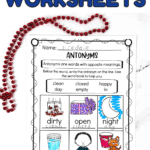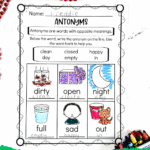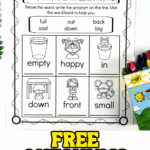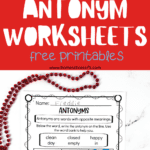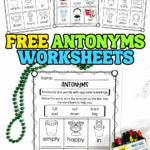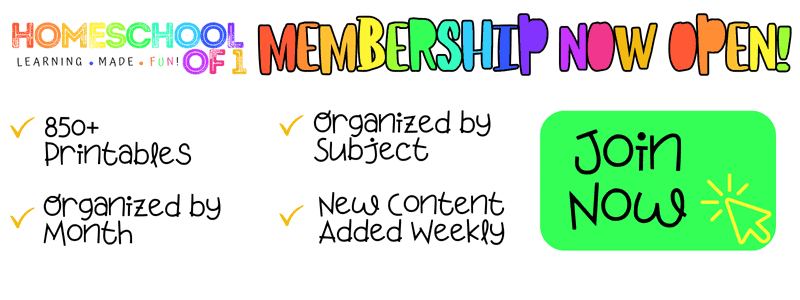Free Antonyms Worksheets for Kids
Learning with antonyms worksheets is one of the easiest ways for kids to understand opposites while building vocabulary.
I’ve found that when children have playful pictures and a word bank to guide them, they not only grasp the idea quickly but also enjoy the process.
These printables give kids plenty of practice with everyday words they already know, like happy and sad or open and closed, making new connections feel natural.
Whether you’re homeschooling or teaching in the classroom, they’re a simple tool that adds both fun and meaning to language lessons.
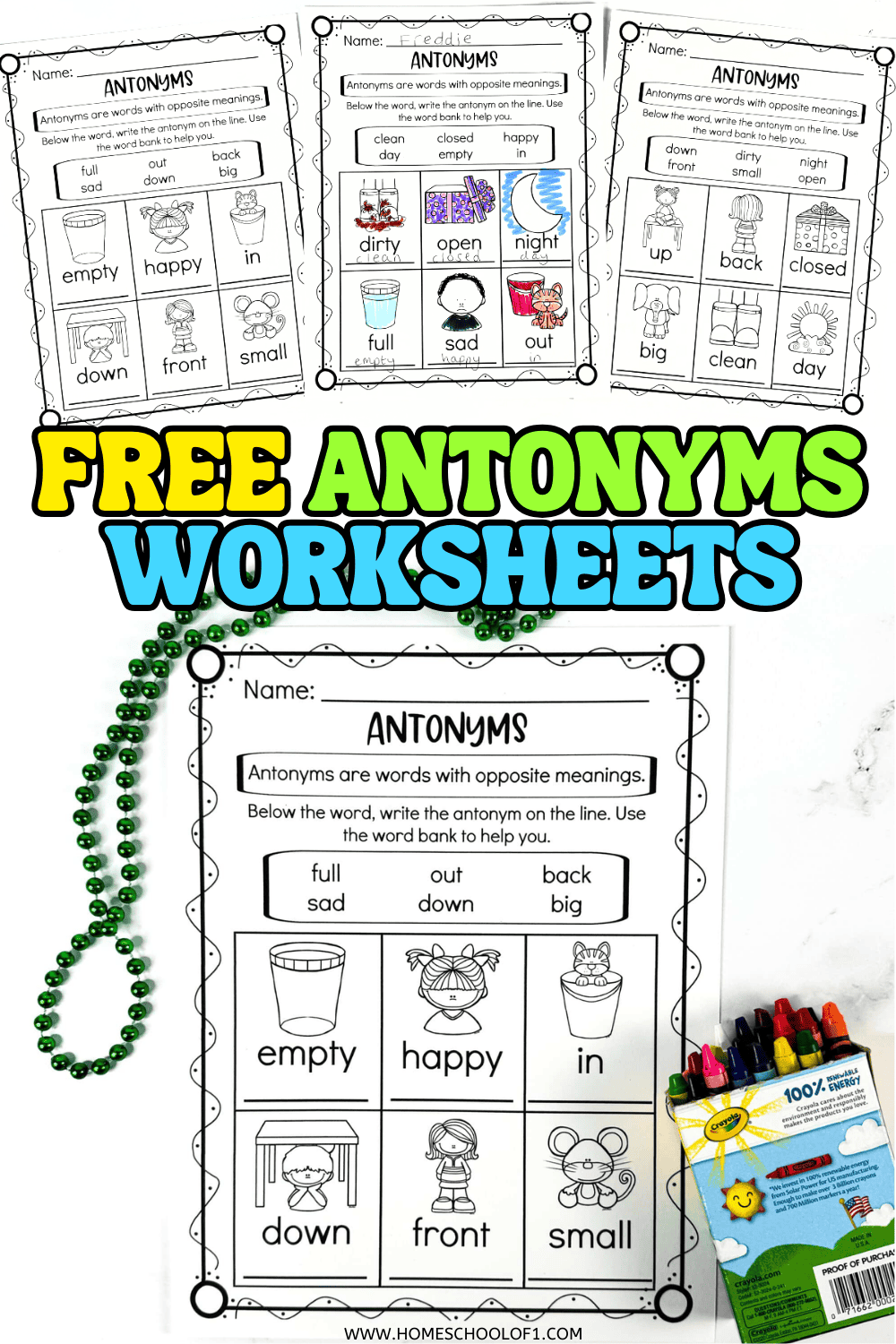
**This post may contain affiliate links. As an Amazon Associate and a participant in other affiliate programs, I earn a commission on qualifying purchases.**
Opposites Worksheets for Kids
This set of three antonyms printables makes learning opposites simple and engaging for young learners.
They’re a nice mix of practice and play, kids write their name at the top, read a short definition (“Antonyms are words with opposite meanings”), and then get started.
Each page includes black-and-white illustrations to help connect meaning visually. A cheerful elephant illustrates big, a bright sun shows day, and spotless boots demonstrate clean.
With a word bank of six antonyms per page, children can match and write the correct opposite confidently.
Across the three pages, there are 18 practical pairs, like happy/sad or in/out, so kids build vocabulary they’ll actually use in everyday life.
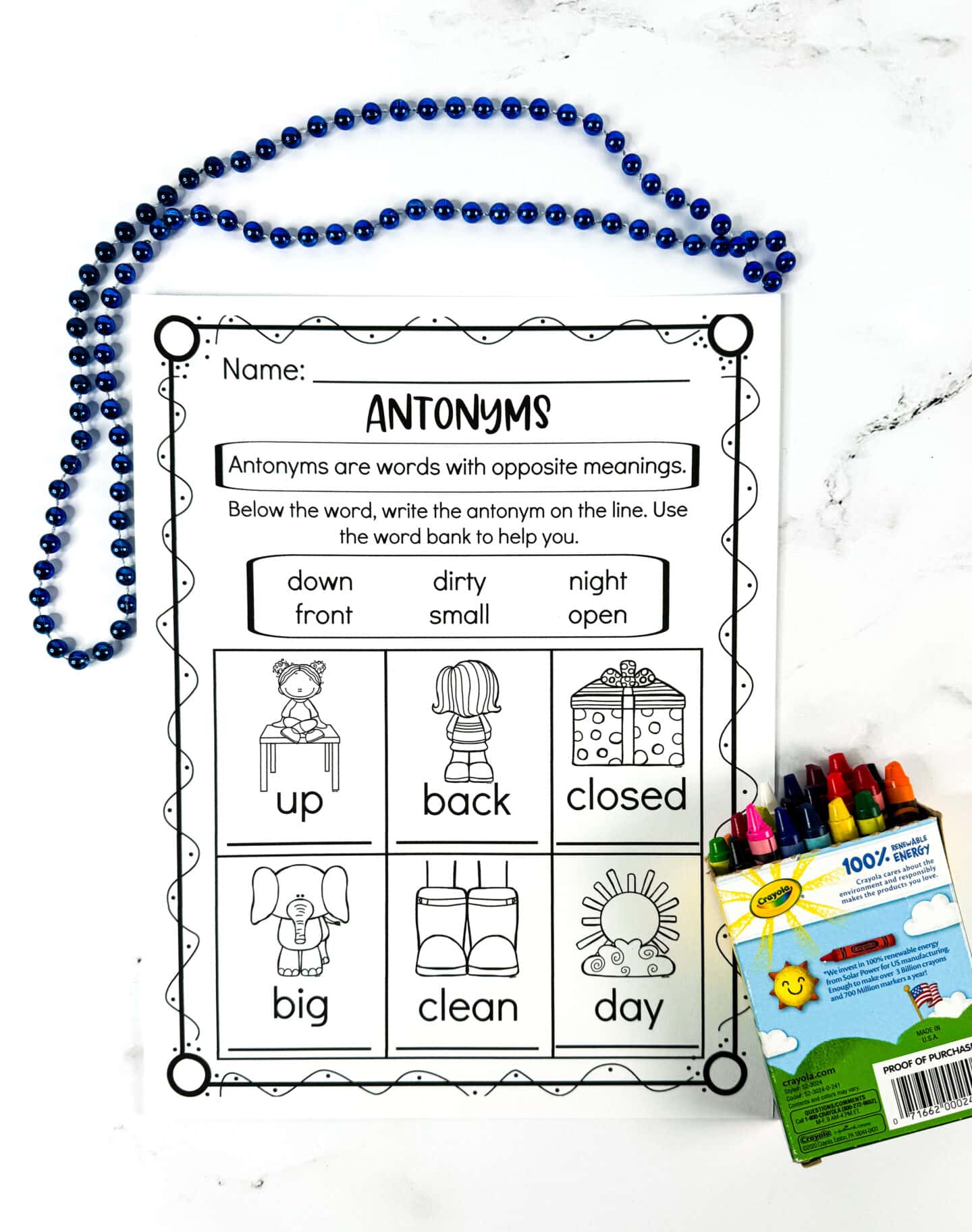
Why These Worksheets Work
These antonyms worksheets keep kids engaged because they combine clear instructions, playful illustrations, and short tasks that feel manageable.
Each picture gives children a concrete way to connect meaning, for example, a sun makes day easier to visualize, while a bucket of water shows full at a glance. In our house, the “day/night” page sparked a little chat about bedtime routines, which showed me how quickly kids connect the words to their real lives.
The built-in word banks give just enough support, so kids aren’t stuck guessing but still get the satisfaction of writing the correct opposite on their own.
That writing step reinforces the vocabulary while also giving extra handwriting and fine motor practice.
The pages follow the same clear structure, so kids know what to expect and can focus on the words instead of figuring out new directions each time.
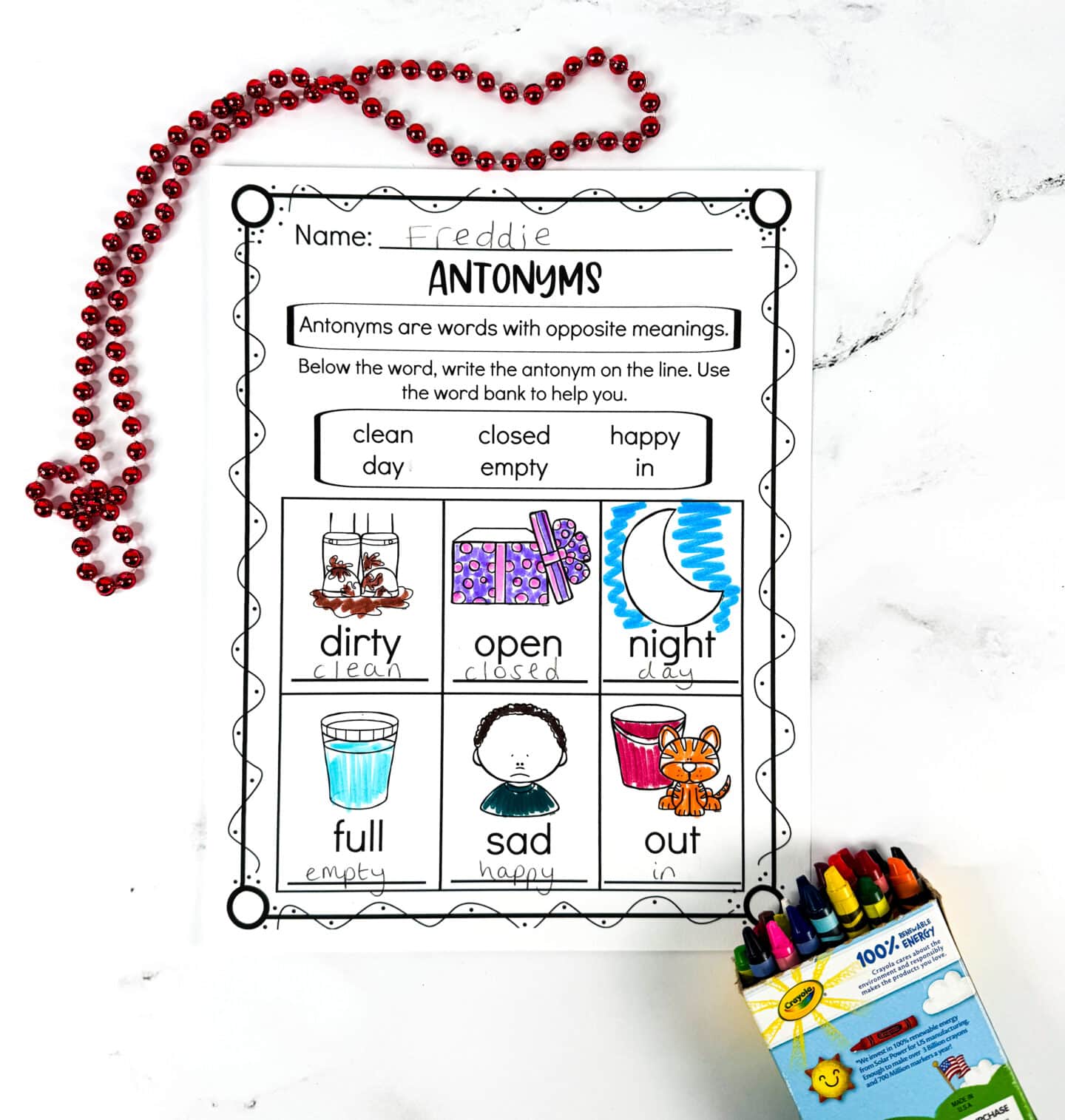
How to Use
These opposite worksheets fit easily into daily routines:
- Morning warm-up – A single page takes only a few minutes, making it a low-stress way to ease kids into learning at the start of the day.
- Independent practice – The clear instructions and word banks mean children can work through the pages on their own while you focus on other tasks.
- Partner work – In a classroom or homeschool group, pairing students turns it into a cooperative activity where they can check each other’s answers.
- Reusable practice – Printing on cardstock and laminating allows kids to use dry-erase markers, turning one set into long-term practice sheets.
- Extended learning – Pair the worksheets with antonym flashcards or picture books about opposites to reinforce vocabulary in different ways.
These ideas keep the activity practical for both home and classroom use while giving kids multiple ways to practice opposites.
Looking for something even simpler? Younger children who aren’t ready for antonyms yet can try our free read it dot it worksheet, a playful way to build early reading confidence.
Benefits of Teaching Antonyms
These antonyms worksheets do more than give kids a list of opposite words — the format itself builds several important skills:
- Vocabulary in context – By matching words like happy with sad or clean with dirty alongside pictures, kids see how opposites work in everyday life, not just in a list.
- Reading confidence – The short definition at the top of each page (“Antonyms are words with opposite meanings”) and the word bank give children just enough guidance to feel successful.
- Writing practice – Every blank space where kids write the opposite word reinforces both spelling and handwriting.
- Critical thinking – Choosing the correct antonym from the word bank requires comparing meanings, which helps children strengthen logic and reasoning skills.
- Engagement through visuals – The cheerful illustrations (like an elephant for big or a sun for day) make the activity feel playful, which keeps younger learners focused longer.
Together, these pages give kids a clear, hands-on way to understand antonyms while also reinforcing core literacy skills.
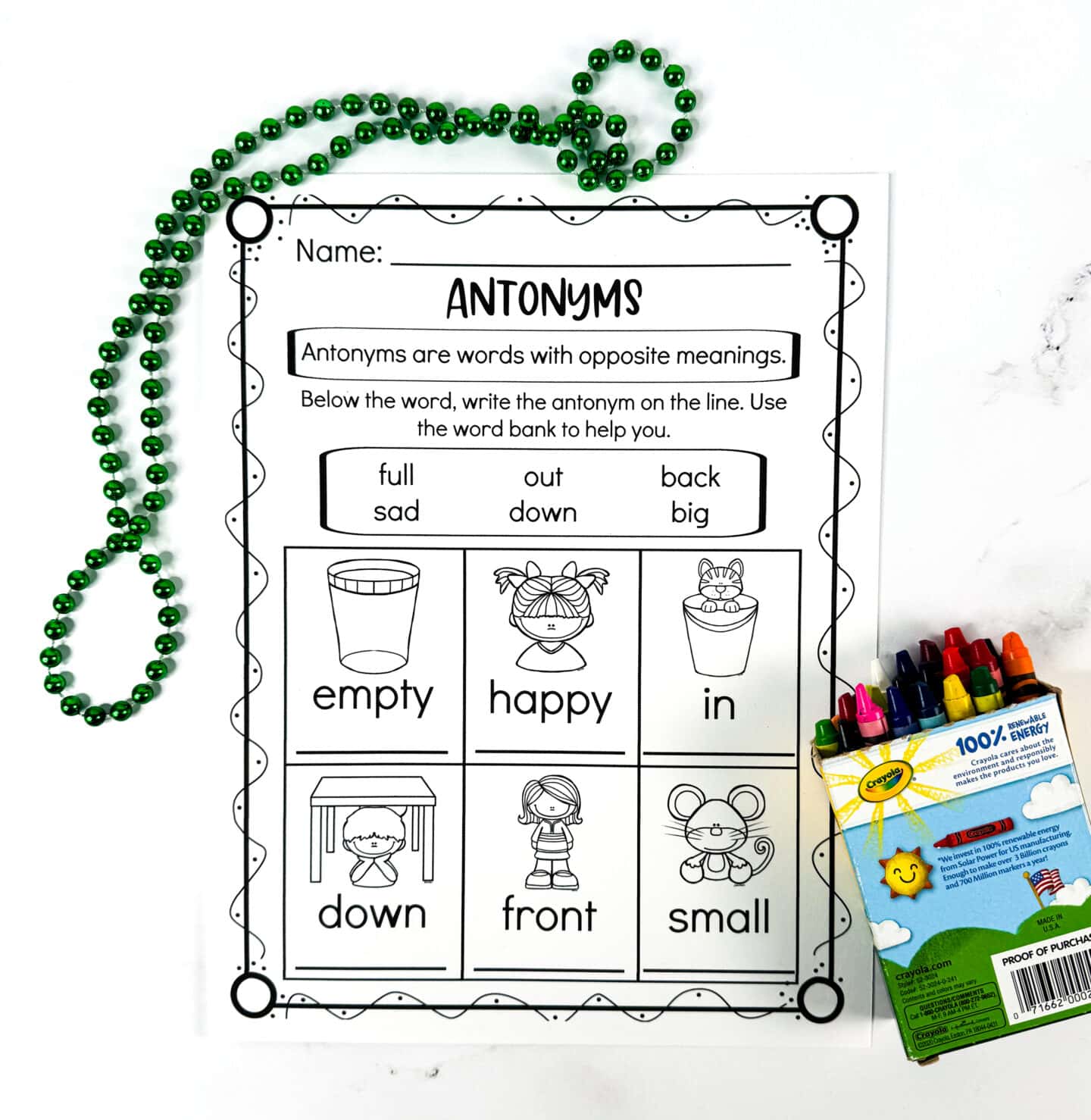
Books That Make Antonyms Fun
Pairing these worksheets with picture books is one of the best ways to help kids understand opposites in action. Stories make antonyms memorable and fun:
- If You Were an Antonym (Word Fun) – A playful introduction that explains antonyms in ways children can relate to, with bright illustrations that match perfectly with worksheet practice.
- Scholastic Pocket Dictionary of Synonyms, Antonyms, and Homonyms – A handy reference for older kids who want to explore beyond the basics. Great for quick lookups while working on writing.
- Synonyms and Antonyms Workbook – Adds extra practice pages with a mix of activities, making it useful for first and second graders who need more reinforcement.
Get Your Free Printable Antonyms Worksheets Here!
We’d love to know how these worksheets work for you! Share your thoughts in the comments or pass this along to other parents and teachers who might love this resource.
If you don’t see the form below, click here to get the free printables.
Last Updated on 21 October 2025 by Clare Brown

